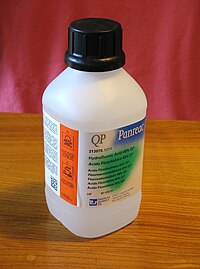
Photo from wikipedia
This study evaluates the use of waste foundry dust (WFD) as a reactive material for mitigating water pollution using As(III) and Cr(VI) as model contaminants. A detailed structural characterization of… Click to show full abstract
This study evaluates the use of waste foundry dust (WFD) as a reactive material for mitigating water pollution using As(III) and Cr(VI) as model contaminants. A detailed structural characterization of WFD was performed using X-ray diffraction (XRD), X-ray fluorescence (XRF), scanning electron microscopy-energy dispersive X-ray spectroscopy (SEM-EDX), Fourier-transform infrared spectroscopy (FT-IR), and X-ray photoelectron spectroscopy (XPS). Batch removal experiments and kinetic studies for removal of both As(III) and Cr(VI) were conducted at various initial pH values (2-10), concentrations (1-100 mg/L), and solid-to-liquid ratios (2.5-125 g/L). The results show that WFD consisted of small particles (< 30 µm) with magnetic properties, mainly composed of quartz (SiO2) and magnetite (Fe3O4). The maximum removal capacity of WFD was 12.6 mg/g for As(III) at pH 3.0 and 6.1 mg/g for Cr(VI) at pH 5.0. WFD was effective in a wide pH range, from 3.0 to 8.0, and in high concentrations, up to 100 mg/L. WFD removed As(III) and Cr(VI) from aqueous solutions through complex processes including adsorption, precipitation, and redox reactions by oxidation of Fe(II). The results of this study suggest that WFD can be used as a reactive material for removal of As(III) and Cr(VI) from aqueous solutions.
Journal Title: Journal of hazardous materials
Year Published: 2021
Link to full text (if available)
Share on Social Media: Sign Up to like & get
recommendations!